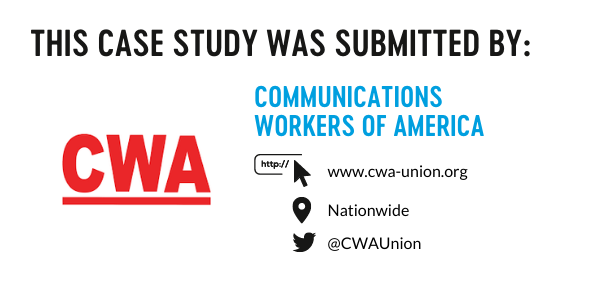Closing the Digital Divide with 5G
San Jose, CA
Population: 1-1,500,000 | Government type: City | Topic: Digital Divide
The Program
San José’s approach to closing the digital divide reimagines the relationship between corporations and local governments, as well as the possibilities of permitting and land use. As wireless carriers race to deploy new infrastructure in public rights-of-way, localities can advance a vision of accountable build-out that treats broadband as a public good.
In 2019, a survey revealed that 95,000 San José residents do not have internet access at home. Over 60 percent of low-income families do not have broadband access at home. This disproportionately affects the Latinx population, with more than 35 percent of Latinx households lacking access.
In order to fight the problem of unequal access and promote the welfare of San José’s low-income families and children, in 2018 the city created innovative agreements with wireless companies to install cellular antenna equipment (often called “small cells”) on city property such as light poles.
These agreements both streamline permit processing—San José’s agreements with Verizon, AT&T, and Mobilitie represent the largest small cell deployment in any US city, on approximately 4,000 city-owned light poles—and set up contributions to a Digital Inclusion Fund. The fund began operating in 2019 and over the next ten years, the participating companies will contribute approximately $14 million in small cell usage fees to the Digital Inclusion Fund. In this same period, the fund aims to connect 50,000 San José households with universal device access and broadband connectivity.
The fund will also engage in broader digital inclusion projects, including library connectivity, digital literacy skills programs, and community trainings. It currently supports community-based organizations that assist residents with getting online and becoming digitally proficient. (The 2020 grantees are listed here.)
Collaborative Governance
When the city began its effort to create a digital inclusion strategy in 2017, they started with a study. This involved consultation with community stakeholders, including surveys and focus group discussions. The model itself is centered on community-based organizations: the fund operates as a centralized point of contact and directs resources to these entities.
Emphasis on equity
The pandemic has emphasized the importance of broadband as a basic human right that enables access to education, jobs, and essential services. From “digital redlining” in-network buildout to inaccessible service fees, systemic racism is at the root of the digital divide. Cities that develop digital equity initiatives in collaboration with stakeholders can meaningfully increase access for Black communities and communities of color, enabling full participation in democracy and the economy. San Jose’s commitment reimagines the community as a place where all residents have access to broadband service.
By demanding fair compensation and market-based pricing for the use of city infrastructure, and establishing a program to fund local digital divide initiatives, San José’s agreements shift resources and power from private companies to the community. Too often, telecommunications companies are able to keep the digital divide conversation limited to insignificant private donations or public-private deals that fail to make a significant impact. By shifting funds to a city program, the community is able to define and drive digital divide solutions. It also reimagines a public budget in demanding that corporations pay their fair share for accessing public infrastructure.
Analysis
Preemption: After aggressive industry lobbying, the Federal Communications Commission (FCC) published an order in 2018 that drastically limits the power of local governments to regulate small cells and prevents local governments from charging fair rates for access to public property. Many of these state laws set lower standards than the FCC’s 2018 order, further constraining local governments from fulfilling their responsibility to protect public safety and regulate deployment.
Impact: This fund focuses on bridging a very pronounced inequity and, if successful, will have significant implications for families and their children who need affordable reliable internet connectivity.
Last updated: January 19, 2021
If you’re interested in learning more, please contact info@localprogress.org













